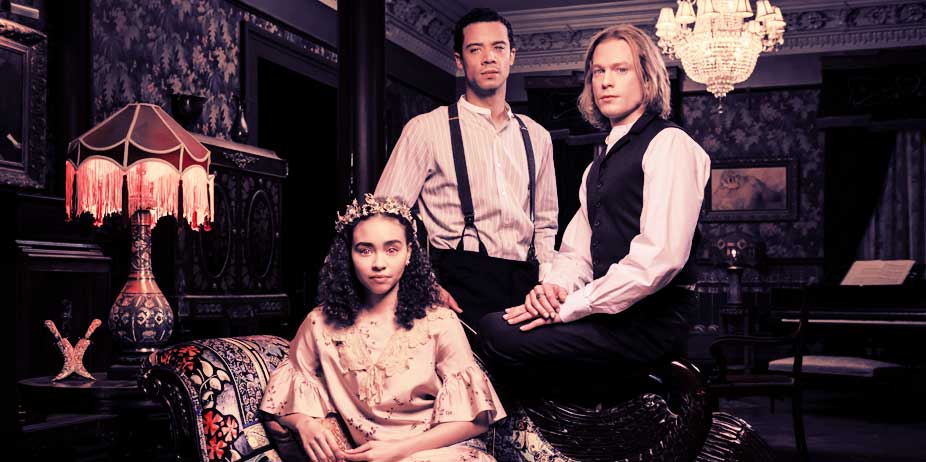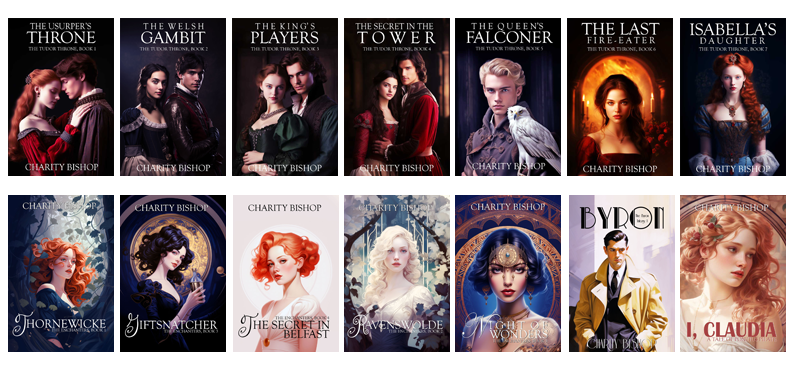
Interview with the Vampire, Season 1 (2022)
AMC has taken Anne Rice’s
novel and transplanted it into the 1920s New Orleans.
Though not faithful to the source material, the writers
have done a surprisingly good job of changing most of
the details while remaining true to the spirit of the
original.
It’s been a long time since
journalist Daniel Mollogy (Eric Bogosian) heard from the
vampire, but now his old friend summons him to take
notes for a book about his life. Louis (Jacob Anderson)
has everything going for him as a Negro in the deep
south. A successful business where people pay good money
to drink, gamble, and mess around with his ladies of the
night, a loving family, and plenty of friends, even if
he gets a lot of disrespect. He has an infatuation with
a girl and pays for her time without ever getting
physical, and an affection for his Bible-banging little
brother. But then he meets Lestat (Sam Reid), a
mysterious and slightly sadistic stranger who seems able
to control time, plant thoughts in his head, and lure
him away from his family.
After an impassioned
encounter, Louis winds up… well, dead. A vampire like
Lestat. Everything enhanced, miraculous, but with a
burning need for blood and a newfound desire for
revenge. The two of them eat and kill, bury and burn
bodies, and share a lavish lifestyle in the high-class
part of town, but Louis’ family senses something is
wrong. His brother jumps off a roof. And he becomes
broody, withdrawn, and full of angst about his need to
suck people dry and inability to control himself. So
much so that he considers leaving Lestat.
And that’s when he meets
Claudia (Bailey Bass), a starving girl in need of a
home, who may be his salvation… or his biggest mistake.
When I heard they were
remaking this and transplanting it into another century,
I went “eh.” And after the first episode, I didn’t like
either of the main characters, but after several
attempts, I kept going. The story gets better, the
characterizations deeper, and it does a good job of
altering events and situations while keeping the
characters mostly true to their originals. Louis here
instead of being a “problematic” white slave owner in
the deep south is a gin-toting whore-mongering black man
full of rage, which gives new meaning to his desire to
break away eventually from Lestat (“He is our master,” a
black Claudia emphasizes to him; “and we are his
slaves”).
Compared to the novel, it’s
gayer (both are bisexual on the page, but vampires in
the original books don’t actually have sex; they use
blood-drinking as an erotic substitute) but lacks some
of the ick (Louis in this version has a fatherly
affection for Claudia, and in the book… it was more than
that). It’s set in a different time period. There’s a
lot more sexual content and foul language, but the
setting works well. New Orleans pops with beauty and
ugliness, refinement and basic desires. It’s a city you
can imagine strolling through and meeting fancy folks,
but you could turn a corner into a rat-infested ally.
Louis comes across as a man who takes a while to find
his moral scruples, but then sticks to them and who
festers with a controlled rage; Lestat is a sociopath
from day one, but we feel sorry for him here and there.
Claudia has the best expansion out of the three, as she
explores what it means to be a young female vampire who
will never grow up. Here, she’s older than twelve, but
has a wild enthusiasm and zeal for life, and her
narration is often funny (“Then I died. But I decided to
make the most of it”).
The costumes are good, as is in the music and the setting. Many scenes are expanded and fleshed out compared to the movie, and allows us to meet new people and get sucked up into the intensity (one scene where Lestat and Louis return home to find the cops in their house, Claudia drunk and laughing, and body parts strewn about her room, is angsty for them). I enjoyed the series overall, but compared to the film, it has less of a spark. The actors are good, but it’s difficult to live up to the towering performances of the original cast. Kirsten Dunst got an Oscar nomination for her unhinged Claudia, and as playful as this actress is, she just can’t exude that level of innocence combined with meanness. It told the story with less profanity and more subtlety, and had exquisite costume design. It remains my favorite adaptation.
Sexual Content:
Whores show their breasts,
use sexual language, and perform for men. Several
graphic, lengthy same-sex sex scenes (one of them starts
as a three-way with a woman involved), kissing between
men, vampire men sharing a coffin, backside nudity, and
implied oral sex. Claudia loses her virginity in the
back of a car, then wonders if she has to grow her hymen
back every time (presumably yes) in her journal. She is
raped by another vampire, but we don’t see it, and Louis
refuses to talk about it with his interviewer.
Violence:
Louis feeds on humans first, animals later. Several times, we see him grab animals and suck their blood while they squeal, whine, growl, or make pathetic noises (rats, cats, dogs, birds). He breaks birds’ wings and leaves them in Claudia’s room, hoping to entice her to feed. Lestat rips people apart, severs their jugular, or lets them bleed out slowly to torment them. Lots of blood and gore, body parts, bodies turning up after a rain, people being jumped on, a few torn apart. The vampires go on a rampage that includes them turning on one another. To punish Louis, Lestat beats him up terribly, crashing through the walls of his home, and dragging his bloody, mangled body around, before he flies up into the air and then drops him from a great height.
Language:
Lots of f-words (used
sexually and casually) and crass references to body
parts.
